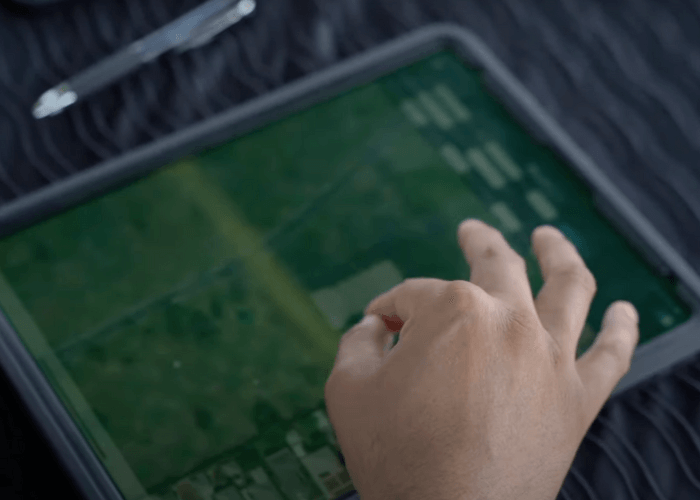Discover the power of graveyard mapping software and how it can revolutionise the way you manage and navigate cemeteries. This comprehensive guide explores the features, benefits, and best practices for using graveyard mapping software.
Understanding Graveyard Mapping Software
Graveyard mapping software is a powerful tool that allows cemetery managers and visitors to create detailed maps of burial sites and navigate the cemetery efficiently. With this software, you can digitise cemetery records, plot grave locations, and easily locate specific graves or monuments.
By using graveyard mapping software, cemetery managers can eliminate the need for manual record-keeping and paper maps, which are often time-consuming and prone to errors. This software provides a centralised database that can be accessed by authorised personnel, making it easier to keep track of burial information and manage the cemetery effectively.
Not only does graveyard mapping software benefit cemetery managers, but it also helps visitors in finding the graves of their loved ones. With the software's search functionality, visitors can quickly locate burial sites and navigate the cemetery with ease. This saves them time and reduces the frustration of searching for graves in a large cemetery.
Overall, graveyard mapping software simplifies the management and navigation of cemeteries, improving efficiency and enhancing the experience for both cemetery staff and visitors.
Benefits of Graveyard Mapping Software
There are several key benefits of using graveyard mapping software:
1. Improved Efficiency: By digitising cemetery records and maps, graveyard mapping software streamlines administrative tasks and eliminates the need for manual data entry. This saves time and reduces the risk of errors.
2. Accurate Grave Locating: With graveyard mapping software, you can precisely locate graves and monuments, ensuring that no burial site is overlooked. This is particularly useful in large cemeteries where finding specific graves can be challenging.
3. Enhanced Visitor Experience: The search functionality of graveyard mapping software allows visitors to easily find the graves of their loved ones. This improves the overall visitor experience and reduces the time spent searching for graves.
4. Data Security: Graveyard mapping software provides a secure database for storing cemetery records. This ensures that sensitive information is protected and accessible only to authorised personnel.
5. Future Planning: By using graveyard mapping software, cemetery managers can analyse burial patterns and plan for future expansion or maintenance. This helps in making informed decisions and optimising the use of cemetery space.
Overall, graveyard mapping software offers numerous benefits that improve the management and experience of cemeteries.
Key Features to Look for in Graveyard Mapping Software
When choosing graveyard mapping software, it's essential to consider the following key features:
1. Interactive Maps: Look for software that provides interactive maps, allowing you to zoom in and out, pan across the cemetery, and click on specific graves for more information.
2. Search Functionality: The software should have a robust search feature that allows you to search for graves based on various criteria, such as name, burial date, or location.
3. Data Integration: Ensure that the software can integrate with existing cemetery management systems and import/export data easily.
4. Mobile Compatibility: If you need to access the software on the go, choose a solution that is compatible with mobile devices, enabling you to navigate the cemetery using a smartphone or tablet.
5. User-Friendly Interface: The software should have an intuitive interface that is easy to navigate, even for users with limited technical knowledge.
By considering these key features, you can select graveyard mapping software that meets your specific needs and enhances your cemetery management capabilities.
Best Practices for Implementing Graveyard Mapping Software
To ensure a successful implementation of graveyard mapping software, consider the following best practices:
1. Planning: Before implementing the software, create a detailed plan that outlines your goals, timeline, and resources required. This will help streamline the implementation process and ensure a smooth transition.
2. Data Migration: If you have existing cemetery records, ensure that they are accurately transferred to the software. This may involve digitising paper records or importing data from existing systems.
3. Training: Provide comprehensive training to cemetery staff on how to use the software effectively. This will ensure that everyone is familiar with the software's features and can utilise them to their full potential.
4. Regular Updates: Keep the software up to date with the latest versions and patches. This will ensure that you have access to new features and bug fixes, improving the software's performance and security.
5. User Feedback: Encourage feedback from cemetery staff and visitors to identify any issues or areas for improvement. This will help you address any concerns and optimise the software's functionality.
By following these best practices, you can maximise the benefits of graveyard mapping software and ensure a successful implementation.
Future Trends in Graveyard Mapping Software
Graveyard mapping software continues to evolve, and several trends are shaping its future:
1. Augmented Reality: With the advancements in technology, graveyard mapping software may incorporate augmented reality features. This could allow visitors to view virtual memorials or historical information about the graves using their smartphones or other devices.
2. Internet of Things (IoT) Integration: IoT devices, such as sensors or GPS trackers, may be integrated with graveyard mapping software to provide real-time information about burial sites, maintenance needs, or visitor traffic.
3. Artificial Intelligence (AI): AI algorithms may be used to analyse burial patterns and suggest optimal grave locations based on various factors, such as available space, family plots, or cultural preferences.
4. Cloud-Based Solutions: Cloud-based graveyard mapping software can provide secure access to cemetery records from anywhere, allowing authorised personnel to manage the cemetery remotely.
5. Virtual Reality Mapping: Virtual reality technology may be utilised to create immersive experiences for visitors, allowing them to virtually explore the cemetery and locate graves without physically being present.
These future trends have the potential to further enhance the functionality and user experience of graveyard mapping software, making cemetery management and navigation even more efficient and engaging.
